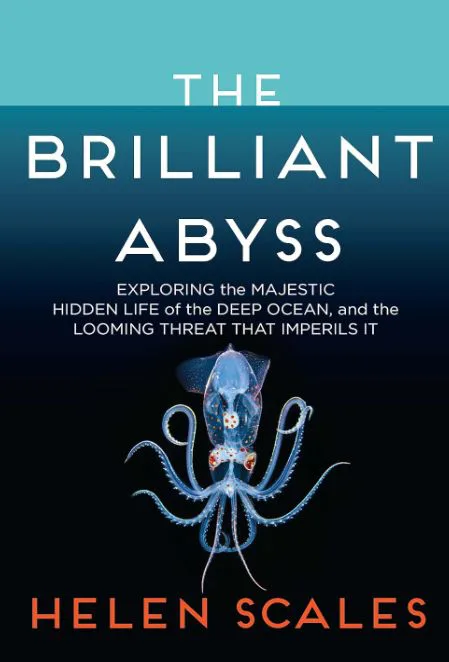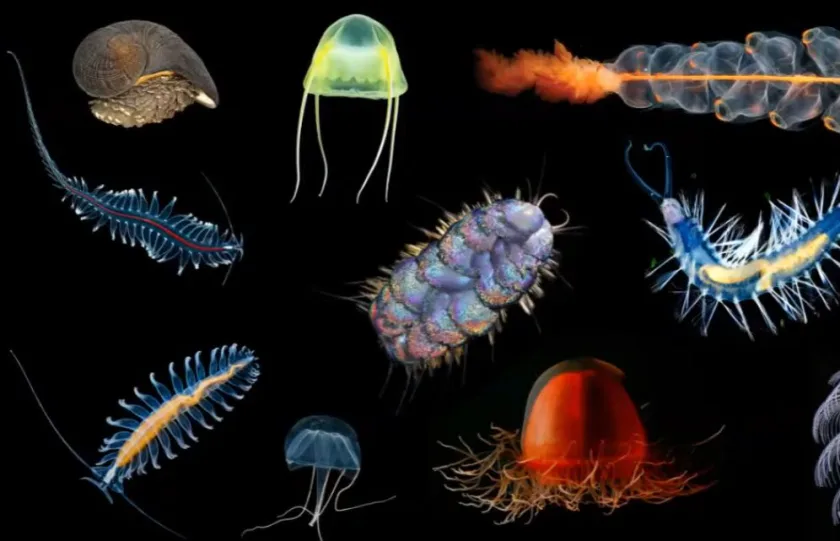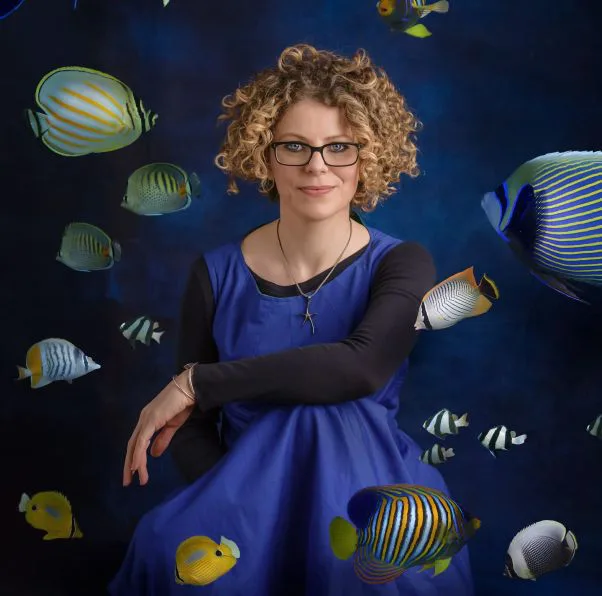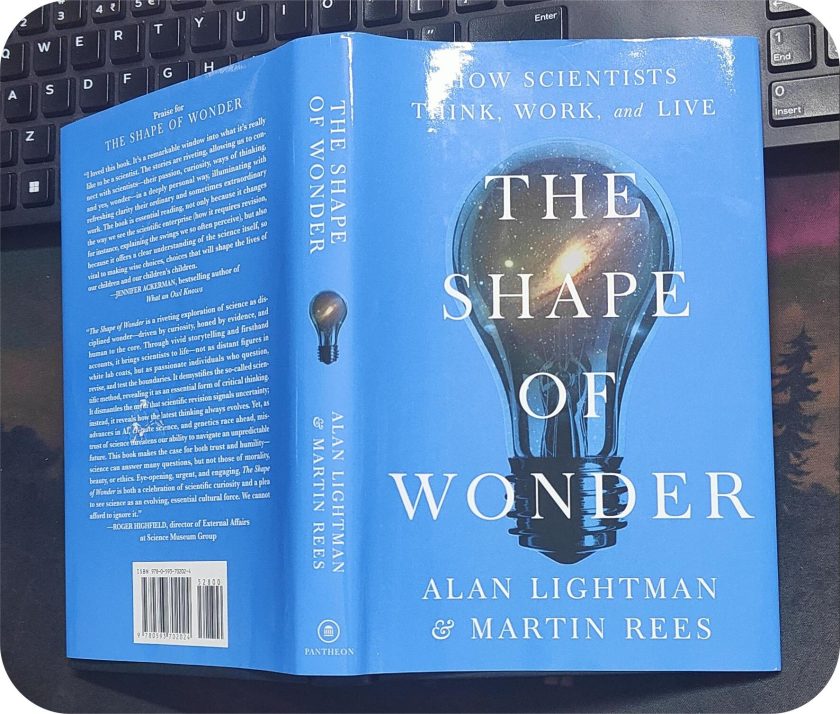
“The Brilliant Abyss: Exploring the Majestic Hidden Life of the Deep Ocean and the Looming Threat that Imperils It” is an awesome work by Dr. Helen Scales. The book was first published in 2021.
Dr. Scales is a distinguished marine biologist, accomplished writer, and captivating broadcaster. With an impressive repertoire of books exploring the wonders of the ocean, including the Guardian bestseller “Spirals in Time” and the New York Times top summer read “The Brilliant Abyss,” Dr. Scales has established herself as a leading voice in marine literature.
Her work also extends to the realm of children’s literature with the global bestseller “What a Shell Can Tell.” Beyond the written word, Dr. Scales’ contributions have transcended to screen and stage adaptations, with her works translated into 15 languages. A regular contributor to National Geographic Magazine and the Guardian, she curates an enduring series on ocean discoveries.
Her current work, “The Brilliant Abyss”, is one of her notable literary achievements. The book stands as a captivating revelation of the ocean’s marvels, enchanting readers with its exploration of the profound mysteries concealed beneath the waves.
The Book: The Brilliant Abyss
Dr. Scales writes with such heartfelt passion and a wealth of experience. In her words, the deep sea becomes this captivating realm, filled with mystery and awe. Through meticulous exploration, she introduces a layered framework that categorizes the ocean into distinct zones, each marked by depth and unique characteristics.
From the surface, sunlit zone extends down to 660 feet. Here, the ocean comes alive with vibrant marine life, basking in the nourishing glow of sunlight. Next, the twilight zone begins and stretches up to 3300 feet, where sunlight gradually wanes, creating an enchanting ambiance that feels almost otherworldly.
The journey reaches its profound depths in the midnight zone, a perpetually dark domain that extends beyond 3300 feet. In this mysterious realm, shrouded in perpetual darkness, the author unveils the captivating diversity and challenges that define each zone.
She also explores potential solutions to issues like illnesses and climate change, all while highlighting a unique and subtle beauty that resides within it.
Section I
Alright, so this book’s got two major sections,
- Exploring the Majestic Hidden Life of the Deep Ocean, and
- The Looming Threat That Imperils It
In the first part, Exploring the Majestic Hidden Life of the Deep Ocean, Dr. Scales gives us a deep-sea tour. The region was initially considered inhospitable and nothing more than huge empty void. If we talk about two hundred years back, it was thought to be nothing more than vacant abyss. We now know that the region is rich in vibrancy when it comes to living beings. As a matter of fact, there is an incredible ecosystem in deep oceans. Some of the interesting facts of the hidden life forms mentioned in the book were:
- Marine snow is a mix of deceased phytoplankton, zooplankton, their waste, and a sticky substance released by bacteria. It descends, providing food for creatures in the mid-ocean and on the abyssal plains below.
- Beyond marine snow, the ocean floor sustains life in various ways. When a whale carcass descends, it becomes a feast for a multitude of creatures, both big and small. Even the skeletal remains continue to provide nourishment for marine life.
- Sperm whales have a unique feature: they exclusively breathe through their left nostril, reserving the right one for echolocation purposes.
- The gelatinous inhabitants, ranging from jellyfish to worms, utilize bioluminescence for both finding mates and securing their meals.
- Yeti crabs use their fringed claws to comb through the food debris that falls from the surface.
- Scaly-foot snails live in hydrothermal vents.
- Additionally, there are ecosystems that rely on chemosynthesis, where extremophiles (organisms adapted to extreme conditions) are the residents. Unlike photosynthesis, which relies on sunlight, chemosynthesis utilizes chemicals such as hydrogen sulfide or methane as a source of energy to fuel the synthesis of organic compounds.
- Seamounts are underwater mountains, and deep corals that grow slowly inhabit these areas.
- Octopus mothers exhibit a unique behavior by not eating for nearly five years while their brood slowly develops.
- Snailfish and brine pools are also part of the diverse ecosystems in these underwater environments.
- Remarkably, colonies of black corals have been discovered to be over 4500 years old.
Nevertheless, most of this life is tricky for us to observe firsthand. Venturing into their depths is both difficult and perilous, so we study them from a distance. It feels like every blurry peek we catch of deep-sea life through a camera or submersible, hints at vast, unseen landscapes that we’re simply not getting to witness.

Section II
While the second part, The Looming Threat That Imperils It, tackles a serious issue threatening the sea. Through activities like overfishing (including the destructive practice of seafloor dredging), pollution, and the consequences of climate change, we’re essentially wrecking a world that many of us can’t even fathom exists.
Activities like mining, construction, and even maintaining navigational channels are creating significant ecological impacts. Seafloor dredging not only affecting the life cycles of various marine species it is also disrupting the natural habitat of marine organisms and the composition of sea floor.
Dr. Scales explains how the underwater world is connected to our surface world, some of her key points were as follows:
- Plankton residing in the profound depths of the ocean play a crucial role in capturing substantial quantities of carbon dioxide, thereby alleviating its impact as a greenhouse gas in our atmosphere. Disturbing this delicate ecosystem has the potential to speed up climate change.
- Secondly, the currents in the deep sea establish connections between polar and tropical regions, propelling ocean circulation and shaping global weather patterns. Consequently, any disruptions or changes in deep-sea currents can have far-reaching consequences on the intricate balance of oceanic circulation and, by extension, impact weather patterns worldwide.
- Thirdly, the extraordinary organisms found in the deep sea carry substantial potential for the development of novel medicines and drugs. This underscores the significance of exploring and preserving deep-sea ecosystems.
According to Dr. Scales, overlooking the well-being of the deep sea poses a threat to our own health. Safeguarding this extensive ecosystem is essential for maintaining climate stability, ensuring food security, and unlocking potential medical breakthroughs.

Takeaway
“The Brilliant Abyss” is not merely a description of an ecological crisis but also a plea for action and change.
Oceans are dealing with a lot of stuff we humans have thrown in there both chemical and biological pollutants. Those deep trawling nets, which were supposed to harvest edible fish are unintentionally scooping up not just the fish, but also some pretty delicate coral and deep-sea critters like sea worms. The mining of nodules is further compounding the environmental challenges faced by the marine ecosystem. The collective consequence of these activities underscores the urgent need for sustainable practices to preserve the delicate equilibrium of our oceans.
“People still retreat to the edges of the sea to seek tranquillity, to stare into the wild waves and escape busy lives. What lies far below the surface has long remained out of sight and usually out of mind. Now, though, humanity’s close ties to the oceans are sinking deeper.”
This represents a genuine existential dilemma, contending for attention alongside pressing issues like pandemics and climate change.
If you have an interest in sustainability, renewables, marine ecosystem restoration, or natural resource damages, this book is definitely a must-read for you.



